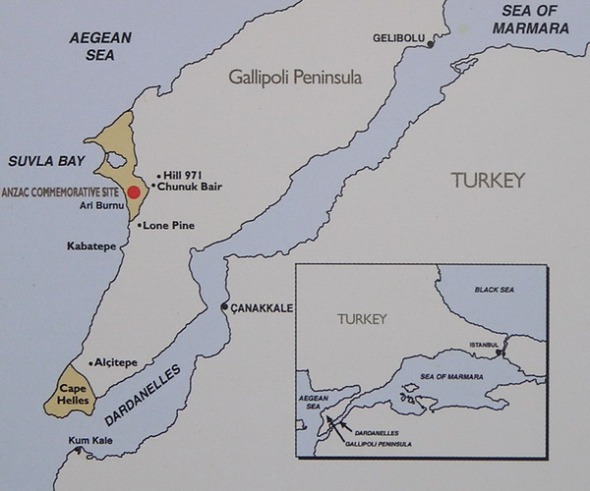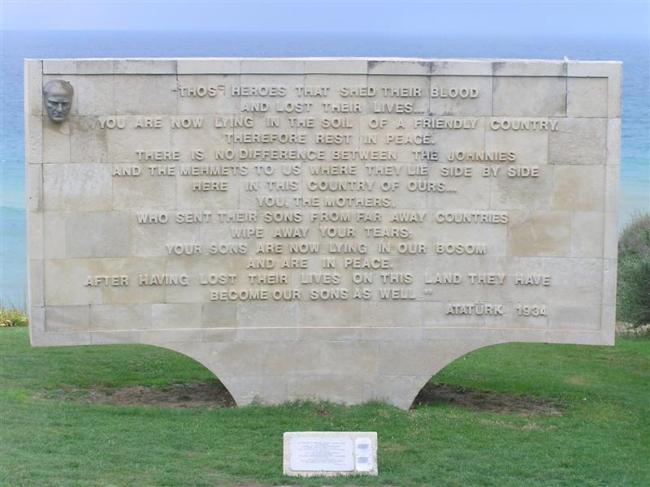25th of April is the date known all over the world as ANZAC day, when millions of Australians and Kiwis gather all over the world to celebrate the most important events in their military history, reminiscing the ill fated affair that was Gallipoli! What created the legend, we have to go back 99 years into the memory lane taking us to the straits of Dardanelles. What has come out of the stalemate, shameful defeat or tactical retreat whatever one might call it, in military terms it was a bogged affair in the harsh terrains of the Gallipoli Peninsula, pitching the German supported Turks against the Allied Nations comprising British, French, Australian and NewZealander youth, many of whom were handling the guns for the first times in their lives, to make their names in the gilded history books and documentaries forever.
The First World War whose centenary we have just celebrated, started after the assassination of Archduke Franz Ferdinand, the Heir of the Austro-Hungarian Empire at the hands of a revolutionary socialist Young Bosnian in Sarajevo, the theatre of many an exploits later on in history! The series of cataclysmic events that followed engulfed whole of Europe soon, with allies of one country declaring war on another and hence started that dreaded long war characterised by trench warfare amongst marshes and hostile plains with no obvious advantage to either side, exactly opposite to the Blitzkrieg type war based on quick outflanking manoeuvres favoured by the Germans in the Second World War. Whether it was the Flanders or Gallipoli, the result was the same, endless humans dying at the hands of nature, disease and enemies alike. The Ottomans, “ the sick man of Europe” in the early part of the Twentieth century were on the decline and the Anatolia was under the prising eyes of the British, French and Russians alike; The Bulgarians and Greek were happy to take a bite if they could like hyenas cornering a near beaten enemy. The Arabs were about to revolt no doubt, under the repressive Turk regimes. The Germans needed a local ally against the Russians in the Black Sea and the Ottomans happily obliged. The Allies sniffed an opening and thought of opening up the route to the Black Sea via the narrowest of the Corridors, the Dardanelles. The First Lord of Admiralty then, Winston Churchill envisaged and pushed for a hazardous and highly ambitious naval plan to force open the straits and eventually link up with the Russian Fleet and capture Constantinople which was the ultimate objective of the campaign. If we look at the geographical maps of the straits, strategically it was a huge undertaking to even think of passing that narrow corridor and so it proved, the Turks under direct supervision by elite German officers, mined the straits and lined the coasts with large batteries to pound on the warships which the British and French assembled, resulting in a hasty and embarrassing retreat and dumping of such plans in future, losing a few ships in the process. The next plan was to take the Peninsula which was known otherwise and immortalized as Gallipoli, much remembered by the Turks, Australians and Kiwis on one hand and the British in a completely different way(best to be forgotten and a matter of many enquiries and commissions as to show the futility of the affair causing thousands of casualties).
The plan was for quite a large military force to amphibiously land from the Expedition Force gathered in Egypt via the Island of Lemnos in the Aegean, which served as the Intermediary base. The force was led by Sir Ian Hamilton, who courted a lot of controversy and flak for his mishandling of the affair and was much maligned after the failure of the campaign. The Force as it turned out was ill prepared, not having huge numerical strength for an offensive, with no updated ordnance maps, hostile beaches, difficult terrain and an enemy who was well prepared, well trenched and well trained too, and not to mention, not lacking in grit and courage. What was supposed to be a swift affair with naval bombardment paving the way for securing the beach heads and reaching the primary objectives of gaining some heights on the first day, led to a long drawn battle with the locals who were hell bent on defending their land against the invasion. The first landings were on this very day on the 25th of April 1915 at Cape Helles by the British forces, comprising many from the Indian subcontinent, the Sikh Regiment and the Gurkhas amongst others; as well as at the area later known as the ANZAC Cove by the Australian and New Zealand Army Corps. The early days were the Baptism of fire for the ANZACs who landed on the beeches with no shelter at all against the raining shells and bullets from dugouts. Full of vigour and the desire to make a name for themselves, they were not found wanting in any way and that created the legend that was ANZAC, getting admiration from all and sundry whether the soldiers or officers, some of whose names occupy the hills which they fought for and won in the campaign. Ruthless advances in the face of enemy fire, suicidal missions with little gains at the expense of countless casualties epitomized the war which lasted a few months. The Objectives which were to be taken in the first day were far off after weeks of dogged fighting at times, hand to hand with bayonets in trenches. At times, people remarked, Gallipoli appeared like a large garbage dump with bodies strewn across the Sea and stench and flies covering the bloated rotting bodies from both sides with no place and time for a decent burial even for the fallen comrades. In all approximately 4,85,000 Allied troops including 50,000 Australians and 8,500 New Zealanders took part, there were about 1,82,000 Allied casualties with 44,000 dead. The Ottomans lost about 86,000 and had a bout 2,50,000 casualties on rough estimates. The harsh weather, the incessant rains and the cold as well as the stalemate prompted the Allies to withdraw at last under a decoy, with surprisingly minimal effort from the Ottomans to chase or corner them. This was going to be emulated another day on an equally momentous time at the Dunkirk some years later. This war not only stopped the inevitable albeit for a few months or years but also created some heroes of the likes of Mustafa Kemal Pasha aka Ataturk, who had a huge impact on the Turkish Independence and sovereignty and later formation of a secular Turkish state. For the British, it was an embarrassment and a military misadventure leading to the fall from grace for many, including the Premier Asquith’s Government and the Generals who led at the front, for the Turks it was a moral victory defending their front yard, immortalizing their then Col Mustafa Kemal whose leadership and skills won many hearts on both sides, for the Australians and New Zealanders, it marked the start of a pilgrimage to that site and celebration of the 25th of April as a National Holiday and the greatest day in the Australian calendar remembering and honouring the youth who laid their lives in a far off land fighting for the Allies, in the first Armed Conflict they ever took part in, proudly etched in the history. Many tour operators in Turkey, Australia and the West thrive on the legend that is ANZAC which is a source of pride amongst the Australians and Kiwis alike. For many youth, travelling over Europe, Gallipoli is the first stop to pay homage to the site where the first Australians fought. Many relations of the Veterans from both sides come and join the festivities on this day where many a deadly battles have been fought on the W, X, Y beaches, Gully Ravine, Sari Bair, Chunuk Bair, Hill 60 to name a few. The names “Baby 700” and “Hill 971” have been immortalized in history. The legend lives on!


